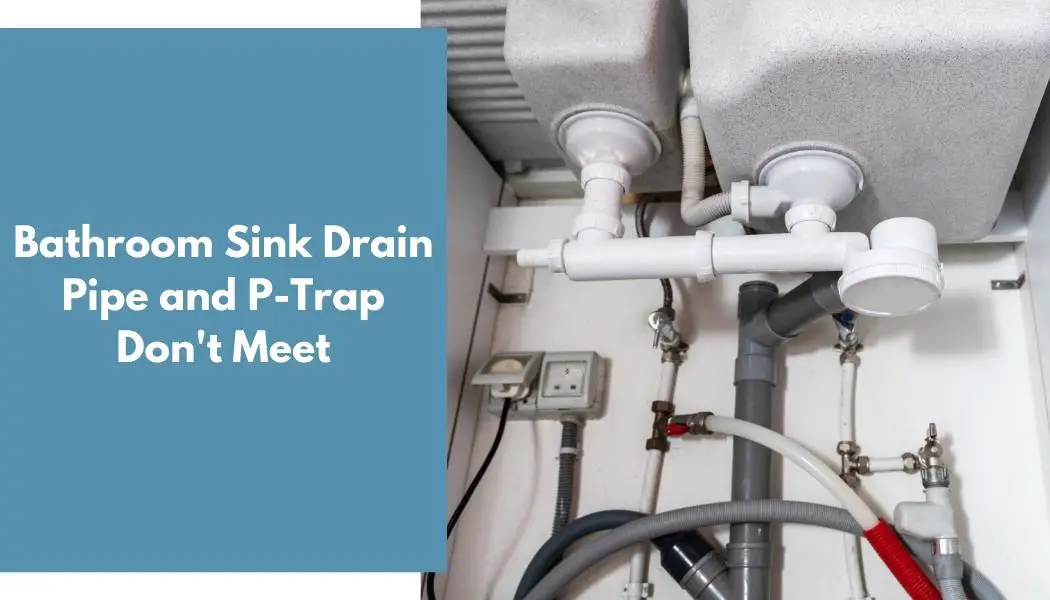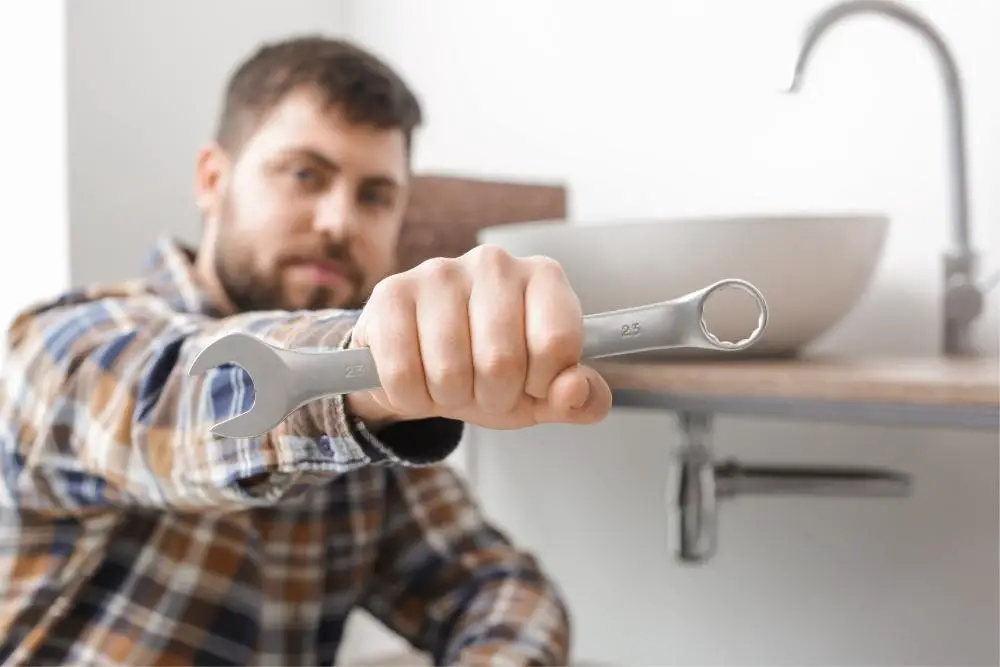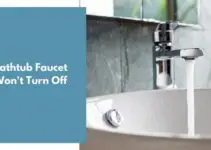Getting the plumbing of your bathroom sink installed can be a bit challenging. Many things can go wrong when it comes to making the necessary changes.
One of the everyday issues individuals have when doing a sink setup is having a drain pipe that doesn’t meet the P-trap. This issue can cause the sink to be unusable until you can fix the problem.
There are various ways to get the P-trap and drain pipe to meet underneath your sink. Some of these include readjusting the tube, adding other components, or using a flexible extension pipe. The orientation of the sink and the various methods involved will also affect which one works best for you.
Read on, and we’ll talk about some steps that you can take to make this issue disappear.
Contents
Why Don’t Bathroom Sink Drain Pipe and P-Trap Meet?
There is no single reason why this could happen. There are a lot of explanations for why it could not occur.
If the drain and the P-trap are not the correct sizes, they will not mesh properly. Many people assume that they know the measurements of a sink because they have one in their bathroom, but this is not the case. Having a good understanding of the various components of a sink will help prevent this.
You didn’t install the correct drain and P-trap pipe. It could happen even if you have the right parts. Having the correct details can help prevent this from happening. One of the most straightforward ways to fix this issue is by learning how to adjust your pipes.
Sometimes, it happens when you have a plumbing setup that is too far away from the P-trap. If a sink is too far away from the drain, it could cause the P-trap to get blocked.
Since your sink doesn’t have a P-trap, it will most likely render it useless until it’s fixed. Fortunately, there’s good news: You can resolve this issue relatively quickly, usually around an hour.
These issues happen due to using an old pipe in a new sink setup. In most cases, it’s not the worst thing to your sink. And worse things arise, call a plumber right away.
What to Do When Bathroom Sink Drain Pipe and P Trap Don’t Meet?
To resolve your connection issues, you’ll need to perform some troubleshooting steps. These instructions will help you get the correct settings for your P-trap and drain.
Before installing the P-trap, make sure that it can fit both the drain pipe and the area where you will install it. If it doesn’t, it might be a size issue. If you’re unsure if the item you’re buying fits the size instructions, go to Home Depot and get the correct one.
After thoroughly cleaning the pieces, try to adjust the P-trap and drain pipes vertically and horizontally. One of the cool things about these two components is that you can change them in various ways.
For instance, most modern plumbing systems allow you to place the drain higher and then twist the P-trap to make it work the way you want.
Try a flexible drain pipe if you still have issues with your connection. Before you buy, you’ll need to measure the pipe’s length, size, and cap.
After installing the P-trap, follow the instructions in the flexible drain pipe kit to fasten it to the side of the drain pipe.
What Size of Drain Pipe for Bathroom Sink Is Required?
In most cases, the wrong drain pipe size can cause a bathroom sink not to function correctly. Having the correct size for the sink will help prevent this issue.
The length and width of a drain pipe are not the same as its opening diameter. For instance, a standard 1-1/4 inch drain pipe will not fit in all bathroom sink drain holes. However, some sink drain holes can accommodate up to a 1/2 inch drain pipe.
Before you start installing a new sink, you must determine the distance of the drain pipe from the sink. Although the exact length of the tube varies, it should be less than 24 inches. It will allow you to align and install the sink easily.
Before buying a drain pipe for your bathroom sink, make sure that the hole it comes from is the correct size. Doing so will make the installation process of the sink easier.
- Can easily be removed for cleanup and clogs
- valve - 1-1/2
- Length - Minimum 13 to Maximum 28-1/3
- Expandable & Flexible P-t
Prices pulled from the Amazon Product Advertising API on:
Product prices and availability are accurate as of the date/time indicated and are subject to change. Any price and availability information displayed on [relevant Amazon Site(s), as applicable] at the time of purchase will apply to the purchase of this product.
How Much Does It Cost to Repair a Sink Drain?
Even though you’re not in the mood to fix this issue, some people are willing to help. When it comes to plumbing issues, installing a new sink can range from around $70 to $250.
The price includes the parts and labor, which usually ranges from around $20 to $50, depending on the project. Most sink setups that need fixing will not require more than an hour of labor, and it just so happens that most plumbing and handypersons typically require around an hour of work to fix a job.
Frequently Asked Question
Do You Need Help From a Plumber to Fix Your Sink?
You don’t require to call a professional to install a P-trap to your drain pipe. After all, if you’re already planning to install a sink, you’re probably already comfortable doing it yourself, understanding how to connect one end of the pipe to another.
Usually, a person will only need to call a plumber if they can’t fix the issue altogether. However, you may need to get multiple fittings to connect the sink in some cases fully.
Can a Drain Go Straight Down?
The answer is no. Doing so will allow sewer gases to escape through the sink, which can cause a foul smell and increase the risk of people having health problems. Unfortunately, this is not allowed under building codes.
Fortunately, there is a way to avoid this issue by installing a straight-up vent and not down.
Is a P-Trap Needed for a Bathroom Sink?
If your sink’s placement is in one of the areas where you use your bathroom, kitchen, laundry room, or even your basement, it will most likely need a P-trap.
It is a building code requirement. Besides being structurally sound, this also means that your sink needs protection from water damage.
A P-Trap is a trap that can help prevent the buildup of toxic gases in your home’s plumbing system. Without one, these emissions will start to smell like a foul odor. Aside from being unpleasant, some of the gases from the sewer setups can also cause adverse reactions.
What Size of P-Trap Is Best for a Typical Bathroom Sink?
Although older homes may have different plumbing setups, most modern homes require a P-trap 1 1/4 inches long. Doing so could lead to an unsuitable arrangement. Also, since the size of the P-trap varies for different types of sinks, it’s important to avoid using one in your bathroom.
Ask your trusted plumber to give you the guidance in buying the right size for your bathroom sink.
Conclusion
Using various methods, you can get the drain and P-trap pipe to meet underneath your sink. Some of these include using a flexible extension pipe, readjusting the line, or adding other components. Depending on the sink’s orientation and the methods used, the one that works best for you may vary.
It’s unnecessary to call a professional to install a P-Trap to your drain pipe. Doing it yourself is also usually a good idea if you’re planning on installing a sink. Aside from being able to induct a P-Trap, it’s also essential to have a good understanding of how to connect the two ends of the pipe properly.







